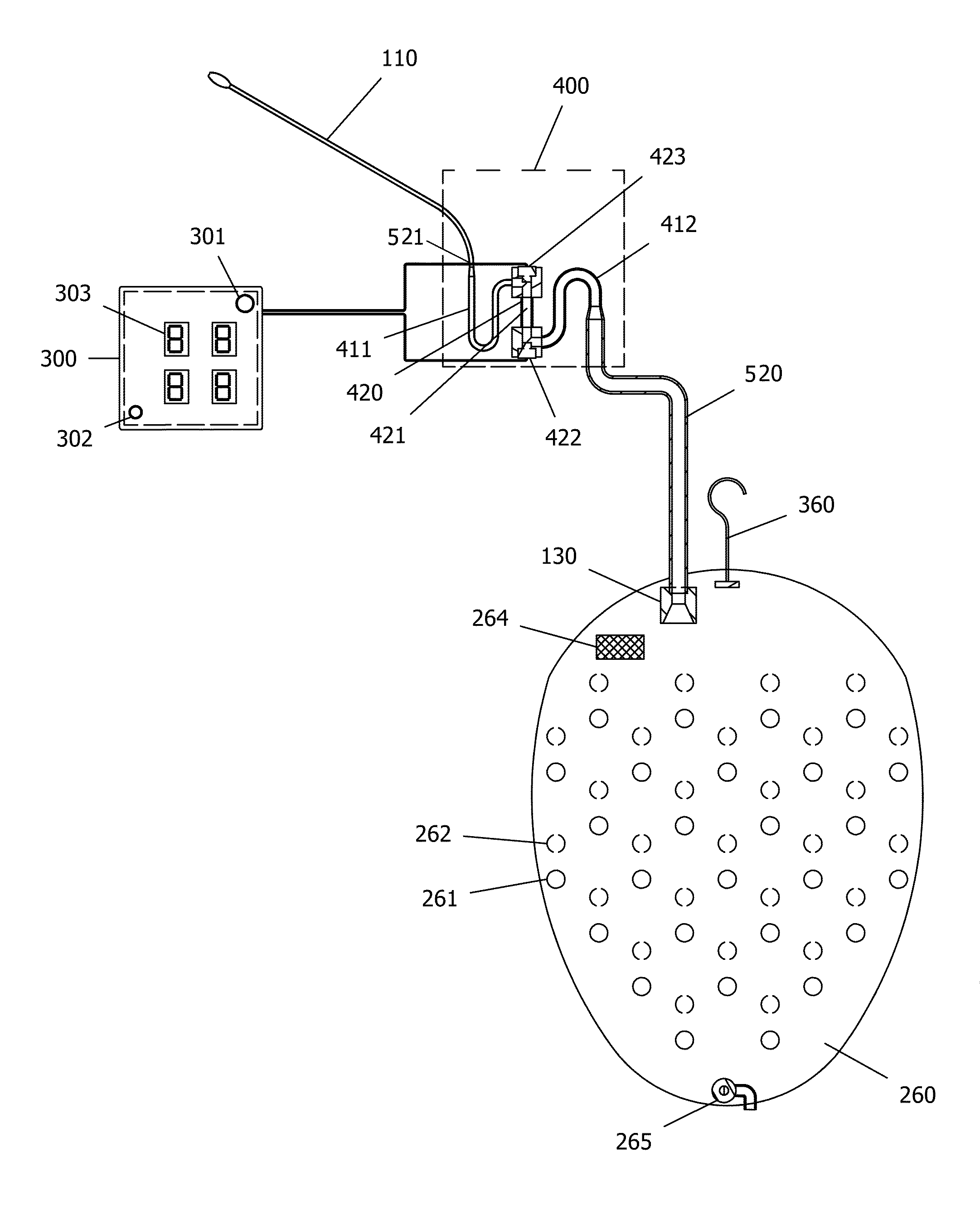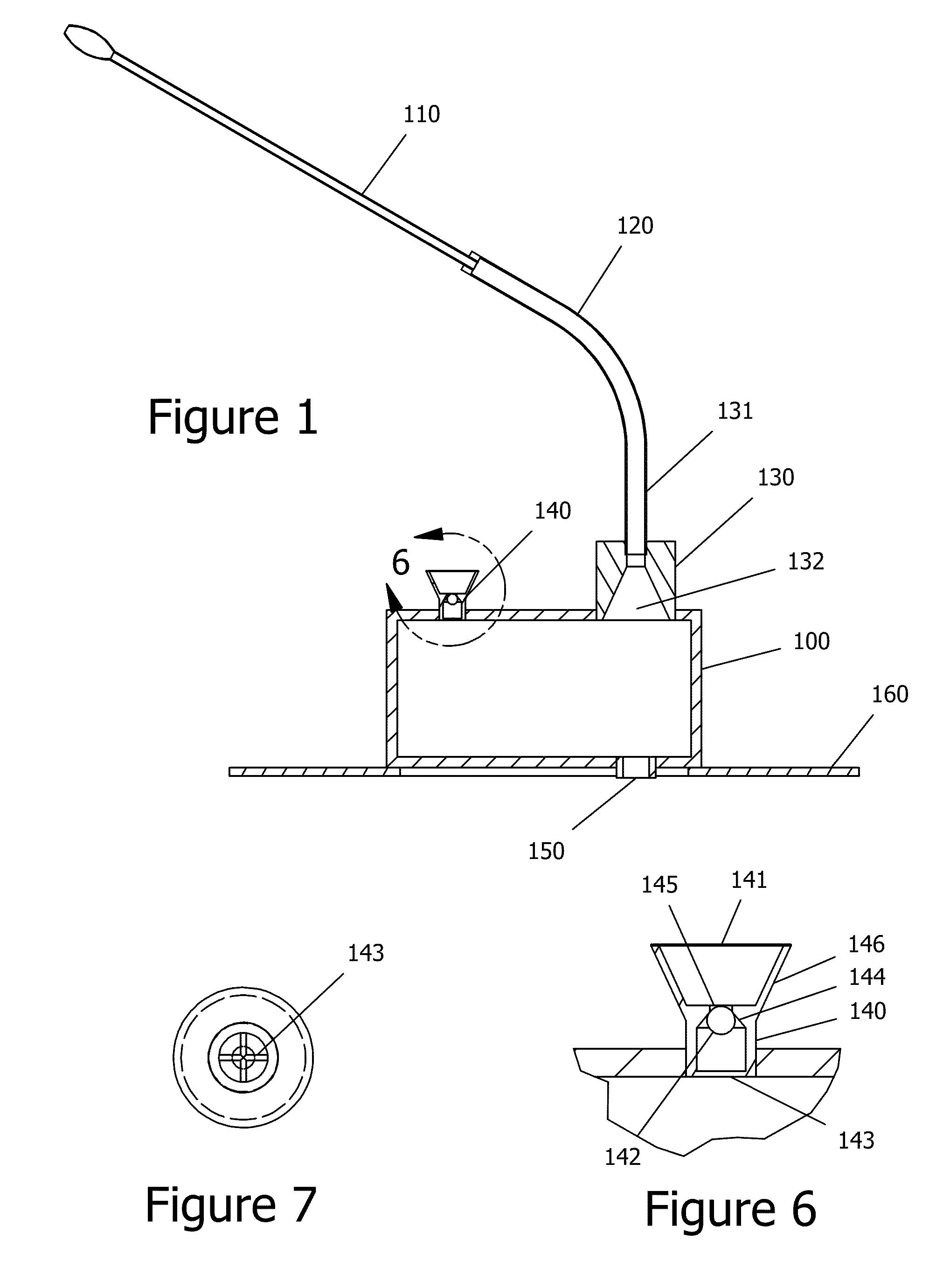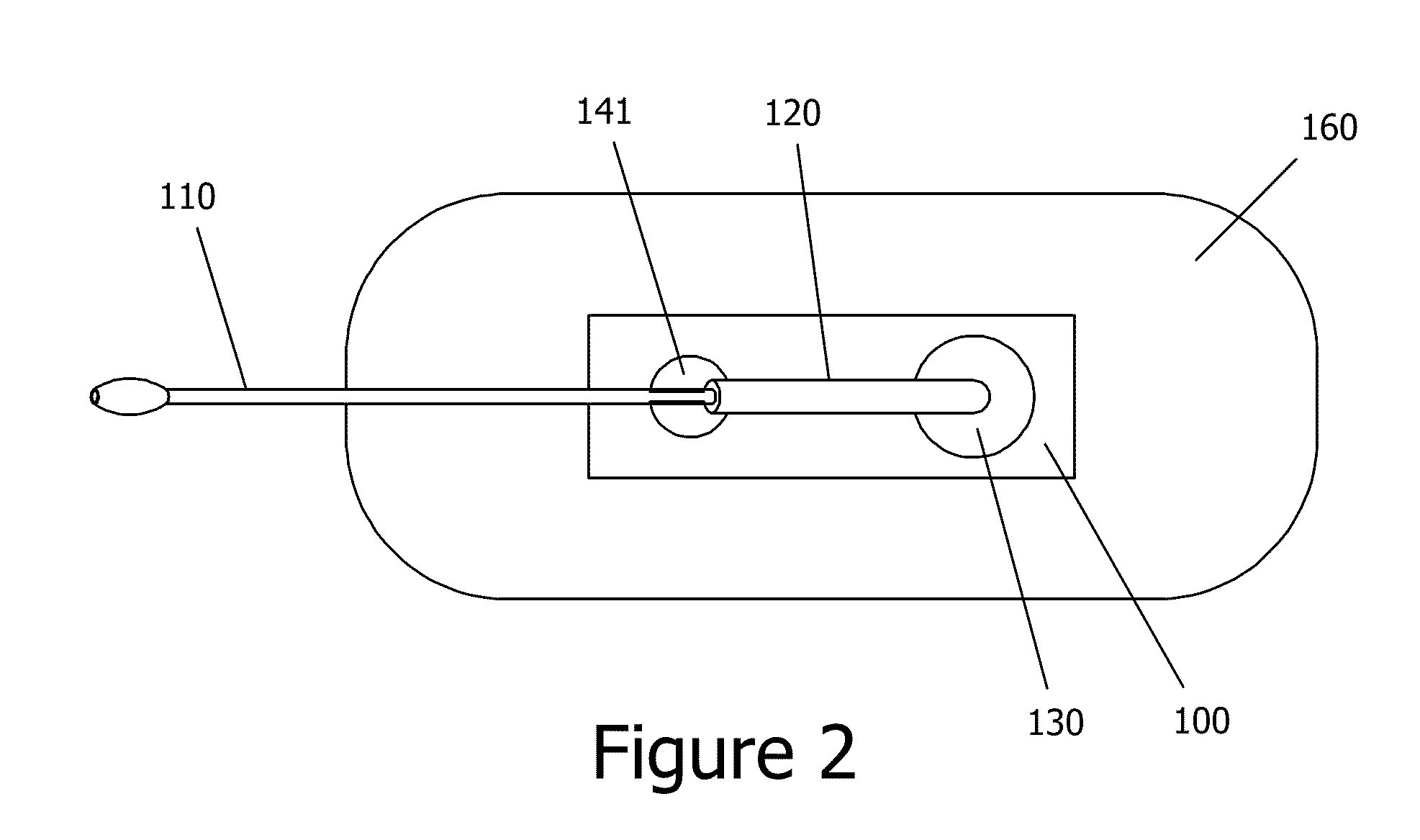Real Time Urine Monitoring System
a real-time, urine-monitoring technology, applied in the field of medical instruments and systems, can solve the problems of requiring arduous physical labor to use, the closed urine collection system currently in wide use is not automated, and the current system is error-pron
- Summary
- Abstract
- Description
- Claims
- Application Information
AI Technical Summary
Problems solved by technology
Method used
Image
Examples
first embodiment
In the urine output monitoring system, as shown in FIG. 3, the exit port 150 of the pressure chamber 100 will be fitted with a rigid short tube 220 and a second opening at the bottom of the pressure chamber 100 will be fitted with a small pressure sensor 240. A nozzle 210 is fitted into the top part of the short rigid tube 220 and drains urine from the pressure-chamber 100 directly into the short rigid tube 220. Typically the length of the short rigid tube 220 will be a few inches long, with an inner diameter of ⅜ of an inch and an outer diameter of less than one inch.
A low flow sensor 230 is mounted on both sides of the short rigid tube 220 adjacent to the lower surface of the pressure chamber 100. This sensor is preferably an RF energy type sensor as described in U.S. Pat. No. 7,482,818 or in co-pending U.S. patent application Ser. No. 12 / 334,980, which are incorporated herein by reference. It will be understood, however, that other sensors might be used within the teachings of th...
second embodiment
In a second embodiment, as is shown in FIG. 4, the exit port 150 at the bottom of the pressure chamber 100 is fitted with a small opening that will drain directly into a conduit 400 coupled to an ultrasonic flow sensor 420. The conduit 400 consists of a capillary tube 411, 421 and 412 shaped like the letter “W” with the last arm 412 of the “W” shape attached to a larger diameter rigid tube 430 that will break capillary flow and drain into the collecting bag 260. A conduit with only two capillary tubes shaped like a “V”, or three capillary tubes shaped like a rotated S, can also be used within the teachings of the invention, and other arrangements are possible.
In this embodiment, conduit 400 has five arms all together: four arms shaped in a “W” with capillary flow, and a fifth arm 430 with regular flow. Preferably, the ultrasonic flow meter 420 will be located on the third arm 421 of the “W” shape, although other placements on other arms of the “W” are possible.
Typically the height o...
third embodiment
In a third embodiment, the ‘W’ shaped conduit 400 together with the ultrasonic flow sensor 420 directly between a catheter connector 521 into which is plugged a Foley catheter 110 and long tube 520, without the use of a pressure chamber, as can be seen in FIG. 5. The Foley catheter 110 itself is a capillary tube due to its narrow diameter and only passes urine and no air into the ‘W’ shaped conduit 400. As was explained above the W shaped conduit will maintain liquid in the ultrasonic flow meter channel at all times which is essential for obtaining accurate measurements. Also the W conduit allows optimizing the ultrasonic flow meter channel 421 diameter and material to achieve the needed accuracy for the high flow and low flow.
PUM
 Login to View More
Login to View More Abstract
Description
Claims
Application Information
 Login to View More
Login to View More - R&D
- Intellectual Property
- Life Sciences
- Materials
- Tech Scout
- Unparalleled Data Quality
- Higher Quality Content
- 60% Fewer Hallucinations
Browse by: Latest US Patents, China's latest patents, Technical Efficacy Thesaurus, Application Domain, Technology Topic, Popular Technical Reports.
© 2025 PatSnap. All rights reserved.Legal|Privacy policy|Modern Slavery Act Transparency Statement|Sitemap|About US| Contact US: help@patsnap.com



